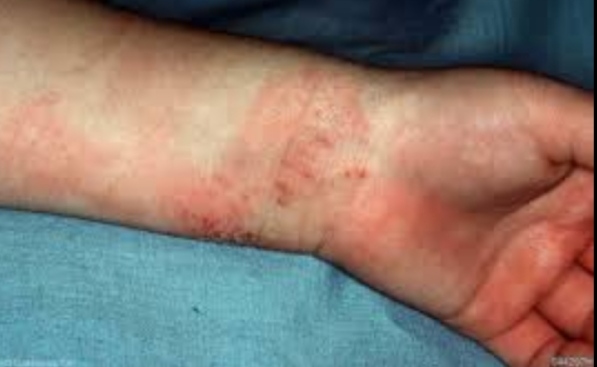atopic dermatitis treatment
ATOPIC DERMATITIS: VERY DRY, ITCHY SKIN
Atopic dermatitis is a Chronic skin condition that more and more people are suffering from. It cannot be cured, but with the right skin care you can do something about the symptoms, such as itching. Read La Roche-Posay's tips for caring for very dry skin. Read how to treat eczema
Atopic eczema, also called atopic dermatitis, is becoming more and more common. During flare-ups, the skin becomes very itchy and then secretes moisture, followed by the formation of scabs. Avoiding allergens as much as possible and applying soothing creams help to reduce the number of flare-ups. Read eczema on face.
SYMPTOMS
Atopic dermatitis (extremely dry skin): a common skin condition Atopic dermatitis is a frequent skin condition, formerly called constitutional eczema. It often appears around the age of three months, but sometimes starts earlier. In infants, the symptoms appear on the face, especially on the cheeks and chin. In slightly older children, the lesions are seen mainly on the neck, in the elbow folds, on the wrists and on the back of the knees. The flare-ups are interspersed with periods of improvement (remissions). They usually begin simply with a red, itchy area on the skin. The skin is very dry and rough in certain areas. Then it begins to secrete moisture and scabs form. Read eczema cream for face .
CAUSES
It all starts with extremely dry skin Atopic dermatitis develops in a predisposing area that is hereditary. In people with this condition, the immune system is particularly reactive. Atopic skin also has a predisposition to severe dryness. Because the skin barrier does not function optimally, allergens from the environment can penetrate deeper into the epidermis. These then stimulate the immune system, which overreacts, just like in a skin allergy. As a result, the clinical signs of atopic eczema appear :
itching, inflammation and fluid secretion. The fact that the number of cases of atopic dermatitis has increased so much in recent years can be attributed to certain environmental factors :
passive smoking, etc. Read how to cure dry skin on face overnight .
TREATMENT
Treatment for extremely dry skin: corticosteroids and emollient creams To treat flare-ups, dermatologists prescribe creams or ointments based on corticosteroids (corticoids). These are used to treat the lesions as soon as they appear. Once the lesions have disappeared, emollient creams help to adequately moisturize the skin, which is naturally very dry. This prevents flare-ups. Creams for atopic skin are applied to the entire body once or twice a day. To prevent flare-ups as much as possible, it is also advisable :
- Taking showers instead of baths, you can use Lipikar Syndet AP+ for this purpose. Read what causes eczema in adults.
- Using gentle cleansing gels, without soap or perfumes
- Wearing cotton clothes instead of woolen or synthetic ones
- Ensure a cool room temperature
The symptoms of atopic dermatitis generally disappear before puberty.





Comments
Post a Comment